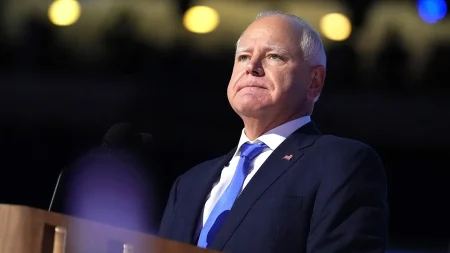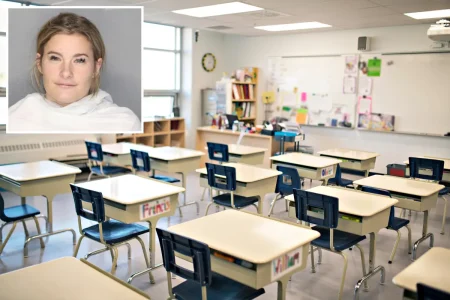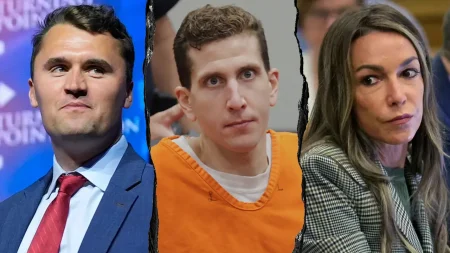Crisis in Nepal: Government Collapses Amid Deadly Protests as Nation Faces Uncertain Future
Political Vacuum Emerges Following Deadly Demonstrations in Kathmandu
In a dramatic turn of events that has sent shockwaves through Nepal’s political landscape, Prime Minister K.P. Sharma Oli and his entire cabinet resigned on Tuesday, creating a leadership vacuum in the Himalayan nation just one day after violent protests claimed at least 19 lives in the capital city of Kathmandu. The mass resignation represents the most significant political fallout from what has become the deadliest wave of civil unrest in Nepal since the country abolished its monarchy and established a democratic republic in 2008.
The protests, led predominantly by youth activists and students, began as peaceful demonstrations against the government’s proposed constitutional amendments but quickly escalated into violent confrontations between demonstrators and security forces. As smoke still lingered over parts of Kathmandu on Tuesday morning, the political crisis deepened with Oli’s resignation announcement, delivered in a somber televised address to the nation. “In light of recent events and with deep concern for our nation’s stability, I have submitted my resignation to the President,” Oli stated, his voice betraying the gravity of the situation. “I urge all Nepali citizens to maintain peace and allow for a constitutional transition of power.” The resignation comes at a critical juncture for Nepal, which has struggled to achieve political stability despite transitioning to democracy over a decade ago.
Roots of Unrest: Economic Stagnation and Youth Disillusionment Fuel Protests
The current crisis has been brewing for months, with economic stagnation, high unemployment, and allegations of corruption creating a powder keg of discontent, particularly among Nepal’s younger generation. Economic indicators had been flashing warning signs for years: youth unemployment hovers around 22 percent, inflation has consistently outpaced wage growth, and remittances from Nepalis working abroad—which account for nearly a quarter of the country’s GDP—have declined during the global economic slowdown. Political analyst Dipak Bhattarai of Tribhuvan University in Kathmandu noted that “these protests represent more than opposition to specific policies; they reflect a profound disillusionment with the entire political system that has failed to deliver on the promises of democracy.”
The immediate trigger for the protests was the government’s proposed constitutional amendments regarding citizenship requirements, which critics argued would marginalize certain ethnic groups and create barriers for obtaining full citizenship rights. However, interviews with dozens of protesters revealed deeper grievances. Twenty-six-year-old engineering graduate Sunita Tamang, who participated in the demonstrations before they turned violent, explained: “We have degrees but no jobs. We see politicians enriching themselves while ordinary people struggle to afford basic necessities. This is not the Nepal we were promised.” Social media played a crucial role in mobilizing protestors, with hashtags like #EnoughIsEnough and #NewNepal trending across platforms as young activists coordinated their movements outside traditional political structures. What distinguishes these protests from previous movements is their notably decentralized nature—lacking clear leadership and emerging organically from widespread frustration rather than being orchestrated by opposition political parties.
Deadly Confrontation: How Peaceful Protests Spiraled Into Violence
Monday’s violence represented a shocking escalation after weeks of largely peaceful demonstrations. According to eyewitness accounts and video footage verified by international media organizations, tensions escalated when protesters attempted to march toward the parliament building, where lawmakers were debating the controversial amendments. Police initially responded with tear gas and water cannons before the situation deteriorated rapidly. “I saw security forces firing directly into crowds,” recounted journalist Ramesh Kharel, who was covering the protests. “People were running in all directions, many bleeding, while others tried to help the injured.” Hospital sources confirmed that most victims suffered gunshot wounds to the chest and head, contradicting initial government claims that only rubber bullets were used to disperse crowds.
Among the confirmed dead were three university students, two journalists documenting the protests, and a 15-year-old bystander caught in the crossfire while returning from school. The Nepal Human Rights Commission has launched an investigation into the use of excessive force, with its chairperson Tika Ram Pokharel calling the casualties “a tragic failure of both leadership and crowd management protocols.” International organizations, including the United Nations and European Union, have expressed grave concern over the violence, urging restraint from security forces and calling for dialogue between protesters and authorities. Nepal’s army chief, General Prem Sharma, ordered troops to remain in barracks unless specifically requested by civilian authorities, a move analysts interpret as reluctance to become entangled in what is increasingly viewed as a political rather than security crisis.
Political Paralysis: The Struggle to Form a New Government Amid Fractured Parliament
With Oli’s resignation, Nepal now faces the complex task of forming a new government within a deeply divided parliament where no party holds a clear majority. President Bidya Devi Bhandari has initiated consultations with major political parties, but early indications suggest finding consensus will be challenging. The main opposition Nepali Congress Party, led by Sher Bahadur Deuba, has called for a national unity government but faces resistance from several smaller parties demanding more radical reforms. “We need a complete reset of our political system,” declared Baburam Bhattarai, former prime minister and leader of the People’s Socialist Party, at a press conference. “Merely changing faces in government without addressing structural issues will not satisfy the legitimate demands of protesters.”
Constitutional experts have raised concerns about potential governance gaps during this transition period. “The executive functions of government must continue even during political transitions,” explained constitutional law professor Maya Singh from Kathmandu School of Law. “The caretaker arrangement has limited legitimacy to make major policy decisions at precisely the moment when decisive leadership is needed.” The political impasse is further complicated by divisions within parties themselves, with younger politicians often at odds with their senior leadership regarding how to address protesters’ demands. Some political observers see this generational divide within parties mirroring the broader societal tensions playing out on Kathmandu’s streets. Meanwhile, the parliamentary calendar continues to face urgent deadlines, including passing a national budget by mid-July to prevent government shutdown—a task that now seems increasingly uncertain given the political turmoil.
Path Forward: Navigating Nepal’s Democratic Crossroads Amid Regional Concerns
As Nepal grapples with its internal crisis, regional powers are watching developments closely. Both India and China, which share borders with Nepal and view it as strategically significant, have issued carefully worded statements expressing concern while emphasizing respect for Nepal’s sovereignty. Economic implications loom large as well, with the tourism sector—a vital source of foreign exchange—already reporting massive cancellations during what should be the peak summer trekking season. The Nepal Stock Exchange recorded its largest single-day drop in three years following Monday’s violence, reflecting investor anxiety about political stability.
The path forward remains uncertain, but many civil society leaders are calling for fundamental reforms rather than cosmetic political changes. “This moment presents both danger and opportunity,” observed Anuradha Koirala, renowned human rights activist and founder of Maiti Nepal. “We can either address the legitimate grievances driving these protests or risk deeper polarization that threatens our democratic foundations.” Several initiatives have emerged from civil society, including a proposed national dialogue forum bringing together youth representatives, political parties, business leaders, and security officials. Whether such efforts can bridge the widening trust gap remains to be seen. As dusk fell over Kathmandu on Tuesday, smaller groups of protesters remained on streets illuminated by candlelight vigils for those killed the previous day. Their continued presence serves as a potent reminder that while a government may have fallen, the underlying causes of discontent remain unaddressed in a nation struggling to fulfill its democratic promise at this pivotal crossroads in Nepal’s history.










